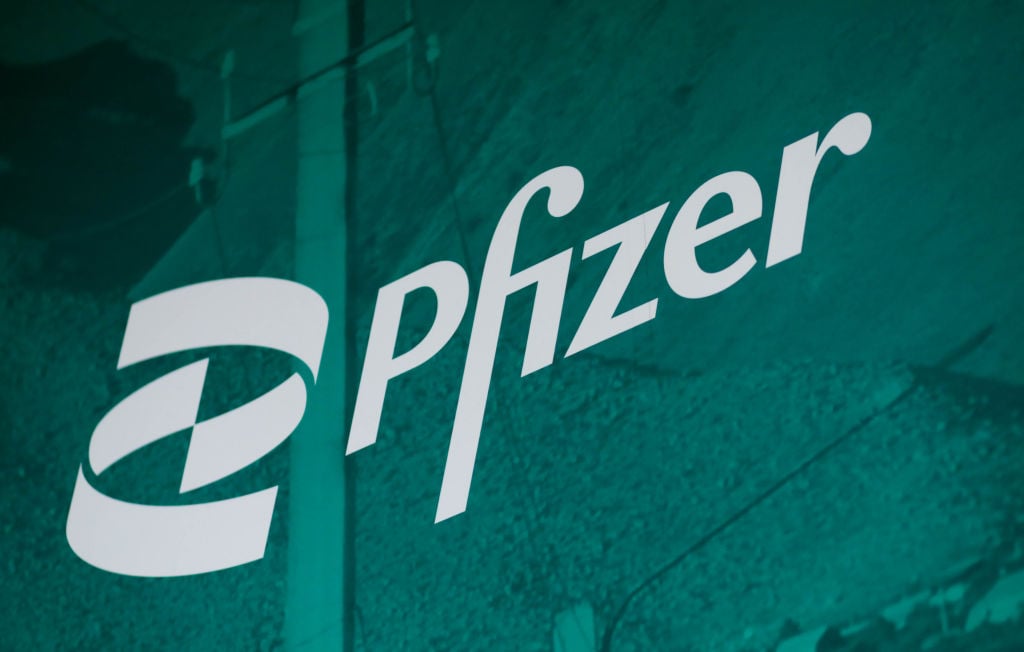
Source: AstraZeneca.
When it comes to investing in drug developers, there's Big Pharma, blue-chip biotechs, and pretty much everyone else. Only one in 10 drug developers is profitable on a recurring basis, meaning the vast majority of drug developers are losing money while trying to develop their product portfolios.
The remaining group of profitable drug developers is split pretty evenly between Big Pharma and blue-chip biotech. While there is no concrete definition that separates Big Pharma from biotech, it's generally agreed that biotech companies lack the product portfolio depth, pipeline depth, and diversity that you see with Big Pharma.
But what if this diversity isn't enough?
Is Big Pharma grossly overvalued?
A quick glance at Big Pharma valuations yields a potentially scary finding: they could be grossly overvalued. How did I come to such a conclusion? By running a screen for Big Pharma PEG ratios.
A PEG ratio, or price/earnings-to-growth ratio, examines a company's P/E ratio in comparison to its future growth prospects. For example, a company with a P/E ratio of 20 and an estimated annual growth rate of 10% would have a PEG ratio of 2 (20 divided by 10). Generally speaking, a PEG ratio below two is considered attractive and perhaps inexpensive, while anything above two could be construed as overvalued. In other words, a PEG ratio above two implies that investors may be paying too much for future growth.
Here are some of the PEG ratios in the Big Pharma sector right now:
|
Company |
PEG Ratio |
|---|---|
|
Eli Lilly |
4.21 |
|
Pfizer (PFE 0.91%) |
4.18 |
|
Merck |
2.26 |
|
Novartis |
3.44 |
|
Johnson & Johnson (JNJ +1.69%) |
3.43 |
|
Bristol-Myers Squibb (BMY +0.79%) |
2.83 |
|
Sanofi |
2.8 |
|
AbbVie |
2.7 |
|
AstraZeneca (AZN 0.01%) |
27.92 |
|
Novo-Nordisk |
1.94 |
|
Teva Pharmaceutical |
2.44 |
|
GlaxoSmithKline |
0.79 |
|
Shire |
1.07 |
|
Roche |
3.27 |
Source: Finviz.
With just a few exceptions, these PEG ratios would imply that investors are paying quite the premium for Big Pharma stocks.
Why investors are willing to pay up for Big Pharma
Curious as to why investors would be willing to pay such a blatant premium for Big Pharma stocks? I believe it boils down to three factors.
First, investors are willing to put blinders on as long as they're receiving (in many instances) a dividend yield that's superior to the average yield of the S&P 500. One of the advantages of having an established product portfolio is that Big Pharma companies can generate billions in cash flow each year. To make up for slower growth rates, which have been caused by losses of exclusivity on blockbuster products within the past couple of years, Big Pharma understands that shareholder incentives are a critical component to buoying stock price.

Source: Pfizer.
Take AstraZeneca as a reasonable example. The U.K.-based pharma giant lost patent protection on its antipsychotic blockbuster Seroquel a few years prior, and it's been struggling to right the ship ever since. AstraZeneca's total sales since 2011 have dropped from $33.6 billion to just $26.1 billion in 2014. Yet, in spite of the company's essentially flat near-term growth prospects, investors continue to support AstraZeneca's $85 billion valuation. Why? Because it's held its semi-annual dividend steady for the past three years. With a current yield of 4.2%, AstraZeneca is practically doubling up the S&P 500's yield.
Secondly, investors likely believe that growth will reaccelerate for these giants, although it may take more than three or five years for that to happen. Keep in mind that drugs are an inelastic product, meaning they remain in demand year-round, regardless of market conditions, because people can't control when they get sick. This means drug developers tend to maintain strong pricing power regardless of economic conditions. It also helps that insurers and pharmacy-benefit managers rarely push back against the wholesale costs of potentially life-saving products.

Source: Bristol-Myers Squibb.
In the case of Bristol-Myers Squibb, the company introduced the world to Opdivo, a cancer immunotherapy product targeted at advanced melanoma and non-small lung cancer. Opdivo is specialized in that it helps a person's immune system better locate and fight cancer cells. But that specialization comes with a whopping $143,000 annual wholesale cost. High-priced and specialized therapies like this help support the long-term growth outlook of a number of Big Pharma companies, and they can certainly be a reason why investors are willing to pay a premium to own stocks in this sector. If Bristol-Myers' shareholders believe that Opdivo has multi-billion dollar potential and that its price tag is here to stay, then there's no reason not to pay a share price reflecting a PEG ratio of 2.8.
Finally, investors could be lured by the fact that the Big Pharma sector has a high barrier to entry. Sure, you'll find plenty of competition for chronic disease indications among Big Pharma companies, but the high costs of drug development have only allowed a handful of companies to really branch out and diversify their pipelines and research. It essentially means that the cash flow of the Big Pharma sector is well-protected.
Should you worry about Big Pharma valuations?
Now for the $64,000 question: Big Pharma is clearly overvalued by traditional fundamental metrics, but can you still buy into the sector and expect to make money?
I believe if you're selective (you can't just throw a dart and hope for the best) and maintain a long-term timeframe, there isn't a reason to be entirely put off by Big Pharma's current valuations.

Source: Johnson & Johnson.
A personal favorite within the sector is healthcare conglomerate Johnson & Johnson. J&J has demonstrated on multiple occasions that it will grow by any means necessary. Between 2009 and 2014 it put 14 new molecular entities on pharmacy shelves, of which half became blockbuster drugs with $1 billion or more in annual sales. Looking ahead, between 2015 and 2019 it anticipates filing for new drug approval for 10 therapies that it believes could reach $1 billion or more in annual sales.
Johnson & Johnson can also grow by acquisition or collaboration if needed. Its drug development partnership with Pharmacyclics yielded what should be a substantial revenue and profit stream from blood cancer drug Imbruvica, and its collaboration with Geron for imetelstat could deliver a first-in-class treatment for myelofibrosis patients. J&J's 53-year streak of dividend growth, AAA-credit rating, and 31-year adjusted EPS growth streak aren't anything to overlook, either.
What am I not feeling so much? Kingpin Pfizer would be a Big Pharma stock I'd approach with some skepticism.
Even though Pfizer is officially over the patent cliff hump and has grown its top line for three consecutive quarters, it's primarily supported its EPS through share repurchases and cost-cutting over the past four years. There's nothing inherently wrong with boosting shareholder yield through share buybacks and dividends, or with improving business efficiency, but Pfizer's near-desperation to seek out growth via acquisition concerns me. Ibrance should be a driving force in oncology that helps offset some of Pfizer's recent patent losses, but beyond Ibrance it could be three or more years before Pfizer really gets its growth engine back on track. With a PEG ratio of 4.2, Pfizer is looking mighty expensive.









